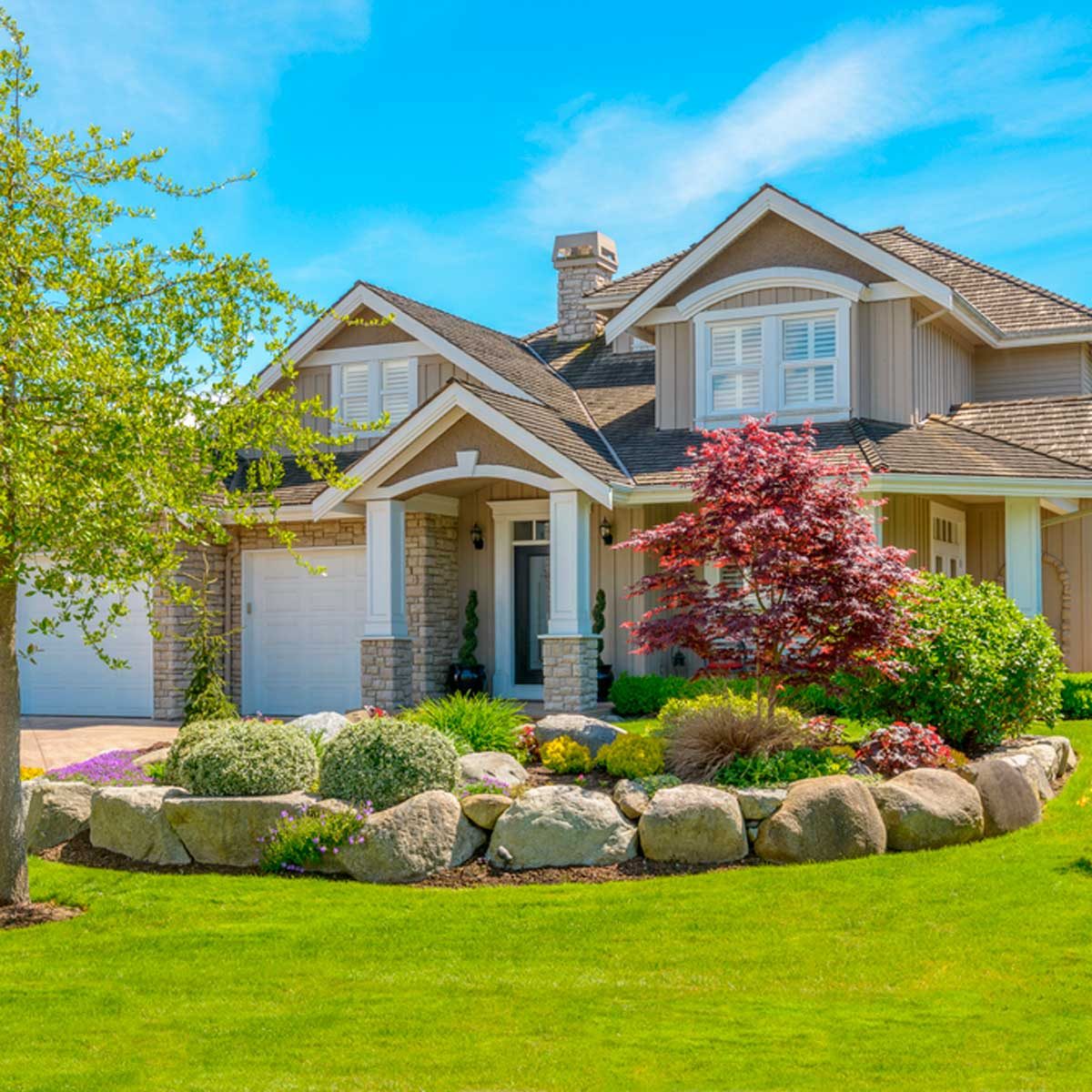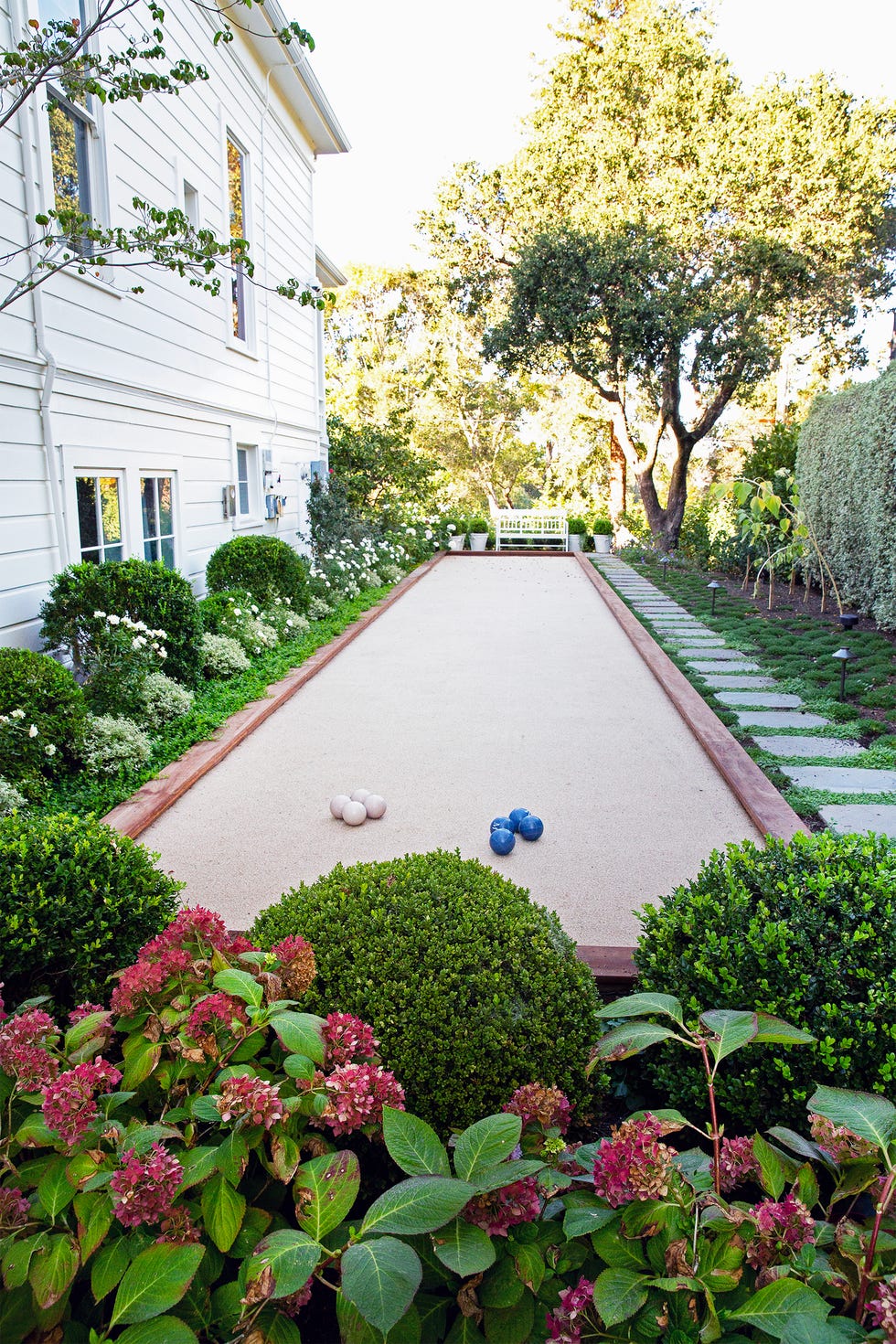Elevate Your Home's Aesthetic With Sustainable Landscape Design Layouts and Eco-Friendly Practices

Benefits of Sustainable Landscaping
Implementing lasting landscaping methods not just saves natural deposits yet additionally advertises biodiversity and boosts general environmental health and wellness. By choosing eco-friendly landscape design techniques, homeowner can reap a wide variety of benefits that extend past just visual allure. One significant advantage is the reduction of water consumption via making use of drought-resistant plants, rainfall gardens, and effective irrigation systems. This not only decreases energy bills however also adds to water preservation initiatives in the neighborhood.
Additionally, sustainable landscaping can enhance soil health by lessening the use of chemical plant foods and pesticides, consequently creating a healthier atmosphere for plant growth and useful soil microorganisms. This, consequently, improves the general resilience of the landscape to withstand environmental stress factors and environment adjustment impacts - bush removal Jacksonville. Furthermore, sustainable landscaping techniques can bring in diverse wild animals, consisting of pollinators like butterflies and , promoting a much more well balanced and dynamic environment within the home
Incorporating Native Plants
To build on the benefits of lasting landscaping, a tactical emphasis on integrating indigenous plants can better boost eco-friendly durability and promote biodiversity within the landscape. Native plants are types that naturally take place in a specific area and have progressed to flourish in the regional climate, dirt problems, and ecosystem. By consisting of indigenous plants in landscaping designs, homeowner can minimize water usage, minimize the demand for chemical pesticides and fertilizers, and support the neighborhood wildlife populace.
Including native plants additionally aids in protecting the special personality and identity of an area's vegetation. These plants often call for much less upkeep as soon as developed, making them a affordable and sustainable landscape design solution over time. Furthermore, indigenous plants can draw in native pollinators like butterflies and , contributing to the general health and wellness of the ecosystem.
When choosing indigenous plants for landscape design jobs, it is necessary to select types that are well-suited to the particular ecological conditions of the site. Consulting with herb gardens or neighborhood nurseries can offer useful guidance on picking the best native plants for a particular area. By integrating native plants right into landscaping designs, homeowner can produce lovely, lasting outdoor areas that profit both the area and the setting.

Water Preservation Methods
Reliable irrigation approaches play an essential function in sustainable landscape design practices, making sure ideal water preservation efforts in outdoor spaces. Carrying out strategies such as drip watering, rain harvesting, and smart irrigation systems can significantly lower water waste while preserving a healthy landscape. Trickle watering provides water directly to the origins of plants, lessening dissipation and overflow. Rainwater collecting entails collecting rain from roof coverings and keeping it for later use in watering, minimizing the reliance on municipal water resources. Smart irrigation systems make use of weather condition information and dirt wetness levels to readjust watering timetables, stopping overwatering and promoting water performance.
Along with innovative irrigation techniques, xeriscaping is another water-saving landscape design technique that focuses on using drought-resistant plants, compost, and effective watering to develop a low-water landscape design - landscaping company Jacksonville. By picking indigenous plants that are well-suited to the regional environment and soil conditions, homeowner can lower the need for excessive watering, eventually conserving water and promoting a lasting exterior environment
Eco-Friendly Hardscaping Ideas
Enhancing outside rooms with environmentally friendly hardscaping attributes can add considerably to sustainable landscape design techniques. When thinking about hardscaping aspects, choose products like redeemed timber, recycled concrete, or all-natural rock to minimize environmental effect. These materials not only add an unique aesthetic interest your outside area yet additionally lower the demand for brand-new sources removal.
Implementing absorptive leading choices such as crushed rock or permeable concrete can help in reducing water runoff and promote groundwater recharge. These alternatives allow rain to permeate right into the ground, stopping erosion and lessening the burden on stormwater systems.
Incorporating native plants right into hardscaping layouts can additionally improve eco-friendliness by find here supporting regional wild animals and decreasing the need for excessive watering or chemical therapies. By incorporating vertical yards or green wall surfaces, you can introduce extra plants into city settings, boosting air high quality and biodiversity.
Incorporating energy-efficient illumination, such as solar-powered LEDs, into hardscaping layouts can decrease electricity intake and reduced your home's carbon impact. Prioritizing environmentally friendly hardscaping concepts not only boosts the charm of your exterior area but likewise shows a commitment to environmental stewardship.
Upkeep Tips for Sustainable Landscapes

Routinely prune plants to advertise healthy development and avoid overgrowth that can bring about pest invasions or conditions. Usage organic plant foods to nourish the soil and plants without hazardous chemicals that can seep into the setting. For hardscaping elements, such as absorptive pavers or rock pathways, consistently clean them to avoid particles buildup and preserve their capability. By remaining aggressive with maintenance tasks, you can protect the beauty and sustainability of your landscape for many years ahead.
Verdict
Finally, sustainable landscaping practices supply numerous benefits for homeowner, from improving the visual allure of the environments to advertising ecological conservation. By incorporating native plants, implementing useful site water preservation methods, and using environmentally friendly hardscaping ideas, property proprietors can develop beautiful landscapes that are also environmentally liable. With correct upkeep, sustainable landscapes can prosper and contribute to a healthier ecosystem for both human beings and wild animals.
Moreover, sustainable landscaping can boost dirt wellness by lessening the use of chemical fertilizers and chemicals, therefore developing a much healthier environment for plant growth and advantageous soil microorganisms.To construct upon the benefits of sustainable landscape design, a calculated focus on incorporating indigenous plants can even visit this site more enhance ecological resilience and advertise biodiversity within the landscape. By consisting of native plants in landscaping designs, residential property owners can lower water usage, reduce the demand for chemical pesticides and fertilizers, and support the regional wildlife populace.
These plants usually need less upkeep when established, making them a lasting and affordable landscape design option in the long run. By integrating native plants into landscaping layouts, residential or commercial property proprietors can create attractive, sustainable exterior rooms that profit both the area and the environment.